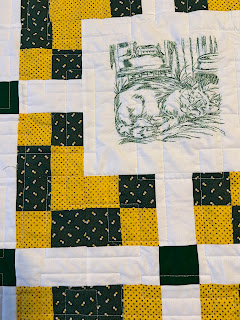The Types of Rayon
Dick Dapson
Fabrications LLC, Richland, MI
At the July meeting of the Lansing Clippers, several people had questions about the types of rayon. I would like to address those queries here so that a more complete explanation is available to you.
The different names for rayon are based on three things: source of the natural fiber, how that fiber is processed, and proprietary trade names.
All rayon is made from cellulose, a polymer found in plants. The polymer is in a solid state, hard (stiff) and insoluble; hardly something that would feel soft as silk next to your skin. Amazingly, that's what happens when you treat cellulose in certain ways. It is first liquefied, then spun out as a soft, insoluble flexible fiber which is plied into yarn and made into fabric.
The earliest rayon was Viscose, the name referring to the viscous nature of the liquefied cellulose. Wood pulp is used here, treated with some dangerous chemicals (sodium hydroxide, carbon disulfide and sulfuric acid). Viscose rayon factories were notorious for worker health problems and environmental pollution, so much so that its production is banned in the US and parts of Europe. Viscose is the least expensive rayon, however, so it is commonly found in ready-to-wear garments and in fabrics for sewing enthusiasts. It is not toxic. Unfortunately, it should not be machine-washed because it might shrink or become misshapen.
Modal is made from beechwood pulp. It is more expensive and softer than viscose, and can be machine washed (cool wash, low dry). The manufacturing process is modified from the original viscose method, using less of the hazardous chemicals. Because the fiber is stretched during manufacture, it is stronger and more wear resistant.
Lyocell, or under the trade name Tencel®, is another modified viscose-type rayon. While it uses the same chemicals as Viscose, it is in a "closed loop" system where all the chemicals, including water, are reclaimed and used over and over again. This vastly improves the ecological profile and better protects the workers.
Bamboo rayon had a brief run of immense popularity a few years ago. It is very soft, but was sold with a lot of misinformation. It was purportedly antimicrobial (able to kill off bacteria). If the original bamboo pulp really had antimicrobial properties (doubtful), those were destroyed in the Viscose/Modal/Lyocell manufacturing process. To its credit, Bamboo rayon is a wonderful fabric in its own right: silky soft, drapey and gently machine washable. Just don't think it will protect you from bacteria!
A final variety of rayon is variously known as Bemberg, cuprammonium or Cupro rayon. Unlike the others, this comes from the cotton industry. When cotton bolls are ginned, a lot of very short fibers are separated from the usable portions. These are called linters and are collected as a source of cellulose. Unlike the common process, the chemicals involved with its manufacture are not hazardous and are used in an environmentally friendly, closed loop system. Bemberg is the preferred fabric for linings. It is anti-static, won't cling and will keep you dry and comfortable. It can be treated to a gentle machine wash cycle, but many of the garments that it lines probably should be dry cleaned.
If you purchase rayon as a fabric from a supplier who does not reveal what type it is or how it should be treated, take a small sample and try a cool wash, low dry machine cycle. If it shrinks or changes shape, you will have to hand wash the garment you make with it.
So there it is, rayon in all it's glory (and comfort)!


Thank you for this article. Rayon is my favorite fabric to wear, if a little challenging to sew.
ReplyDelete